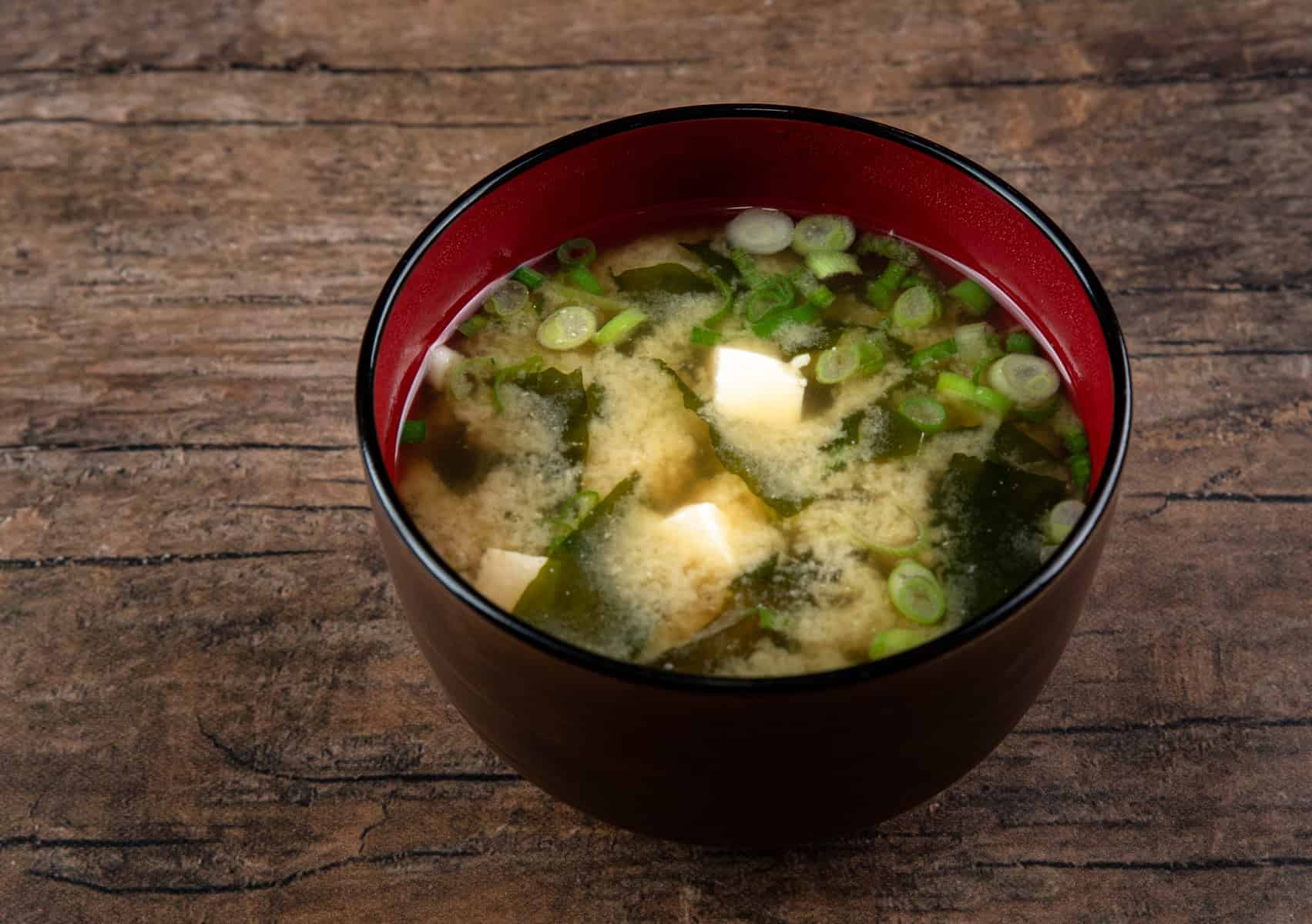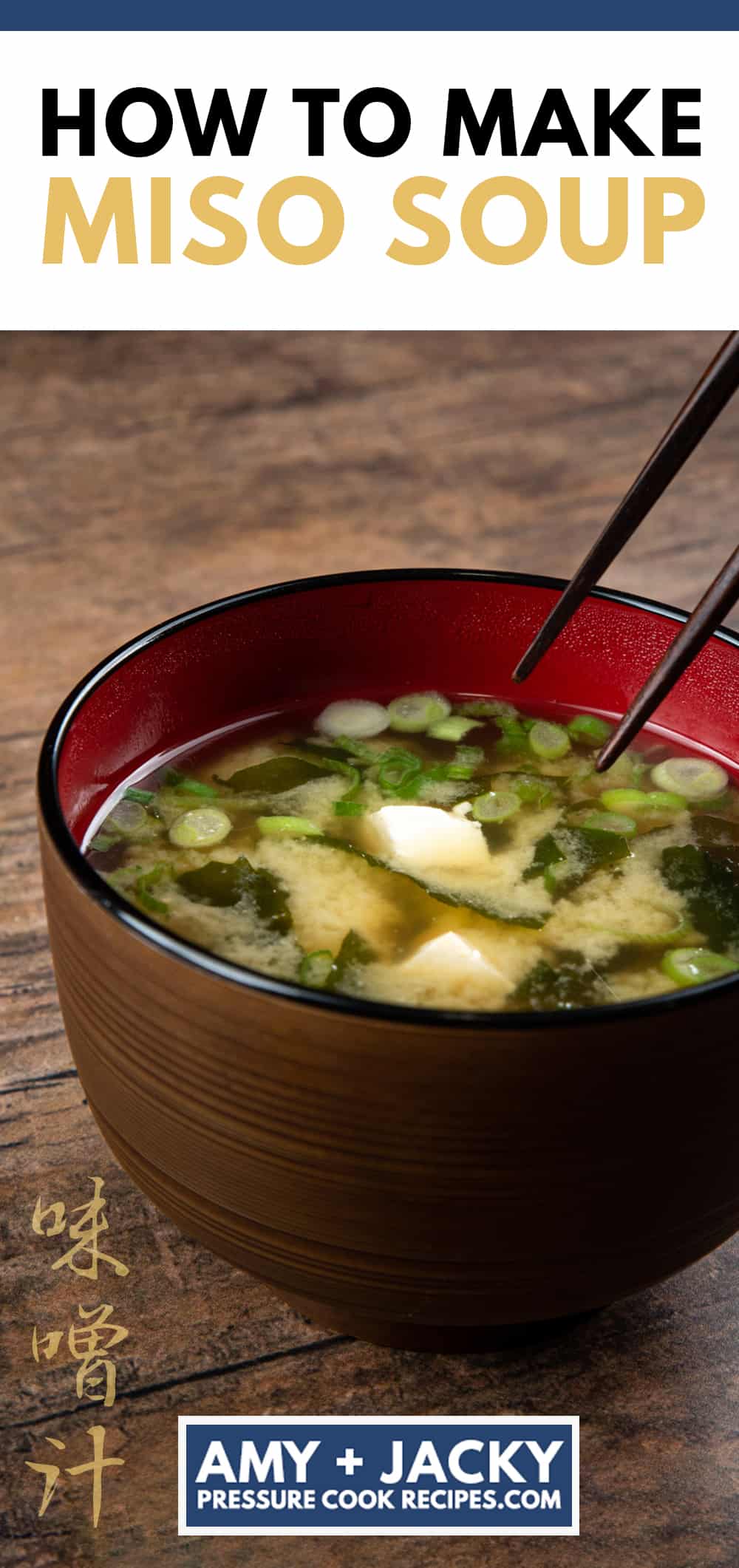Learn how to make Miso Soup in 30 minutes! This heartwarming Japanese homemade miso soup is easy to make with few healthy ingredients. Pack with savory-umami flavors, soft tofu, refreshing green onion crunch, and tender kombu with a bit of chew. Great way to start a delicious Japanese meal.
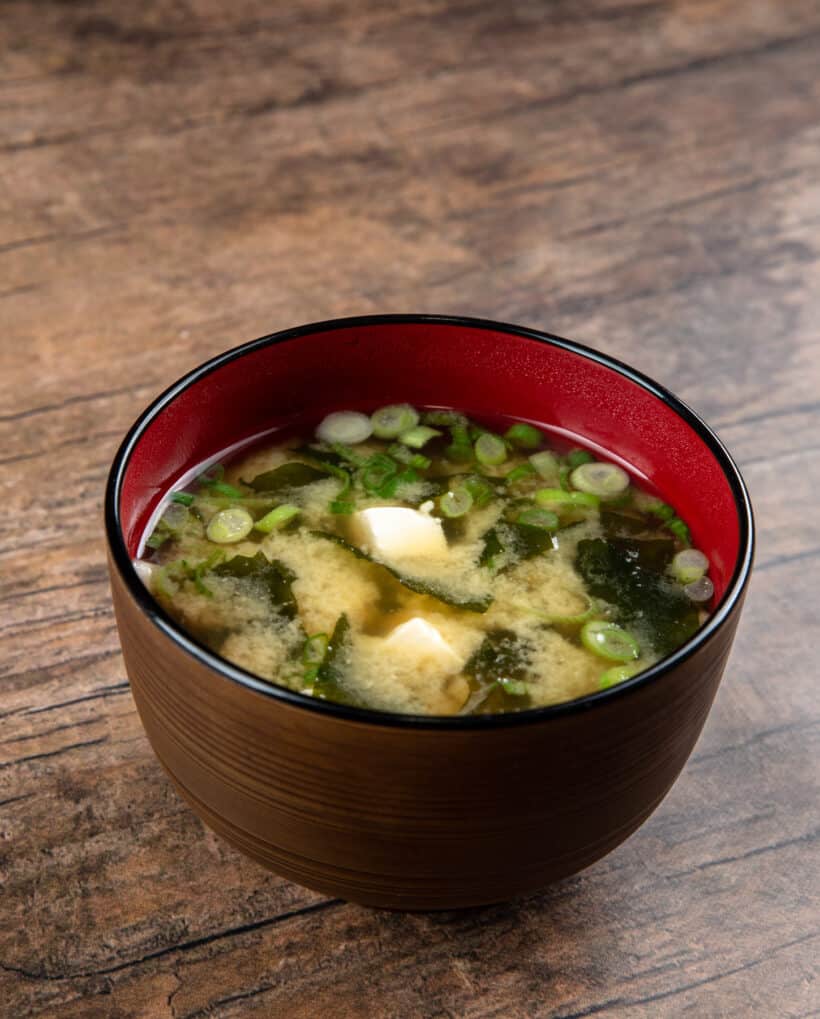
What is Miso?
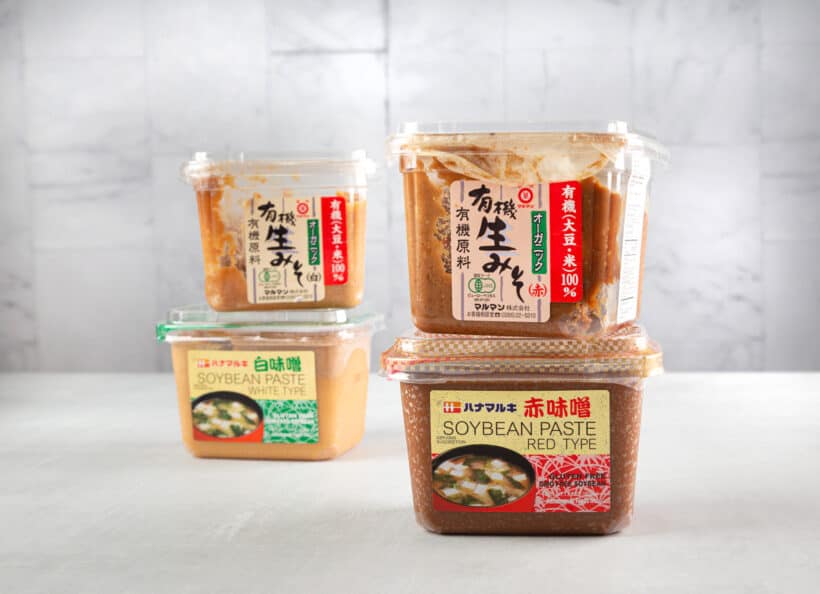
Miso (Japanese: みそ or 味噌) is a fermented soybean paste. It adds complexity and rich layers of flavors, plus body and texture to a dish. A key ingredient in Japanese cuisine.
The traditional craft of making miso is both an art and science! Generally, you make miso by fermenting soybeans with salt, kōji, and grain. This makes it a natural source of healthy probiotics, that’s also rich in essential vitamins and minerals.
You can use miso to make an umami-rich broth for ramen or udon, creamy dressing, or a flavorful glaze for meat, seafood, or vegetables.
Nowadays, you can usually find different varieties of miso paste in plastic containers like the above photos. They’re ready to use and you can even eat them right out of the containers.
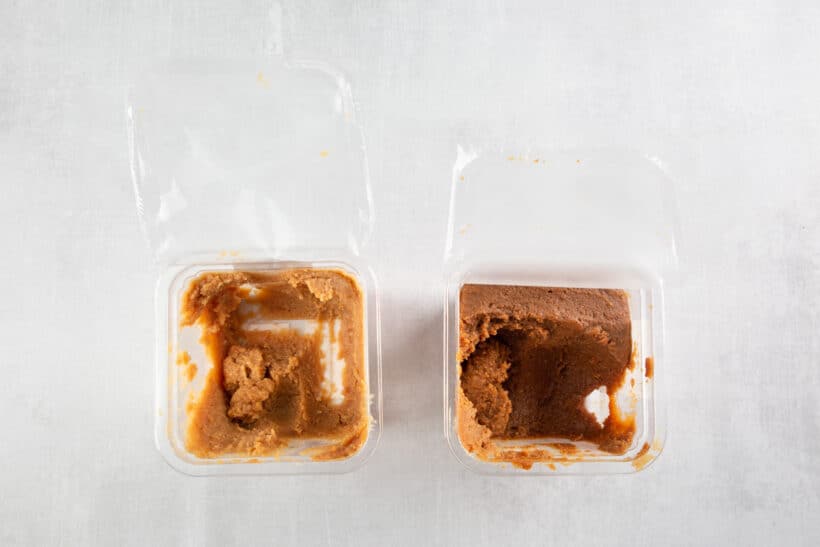
Miso Types
There are many types of miso made in different regions of Japan. They vary in texture, flavor, color, aroma, and usage. It depends on the ingredients, the proportion of soybeans to koji, fermentation time, and fermentation conditions. The most common types are White Miso, Red Miso, and Yellow Miso.
Miso Flavors & Aroma: Different types of miso vary in taste, but it mainly tastes salty, umami, and earthy. Generally, darker miso has stronger & more intense flavors and aroma. For homemade miso that continues to ferment, the flavors will continue to change as the miso ages.
Miso Texture: Some miso paste has a creamy smooth texture, while others somewhat resemble thick, chunky peanut butter.
Miso Color: The color of miso ranges from light beige to caramel to red-brown to almost brown-black.
How to Use Miso
It’s a very versatile ingredient that deepens the flavor of your dishes. For example, you can use miso in sauces, dressings, batters, soups, marinades, desserts, glaze, dips, or savory dishes. And of course, it constructs the base of miso soup! Generally, lighter miso is great for light dressings or sweets, and darker miso is great for braises or stews.
Miso Storage
Miso keeps very well in the refrigerator. If you keep it in your fridge, the miso itself generally doesn’t go bad due to its salt content. However, the store-bought miso’s quality, flavor, texture & aroma will deteriorate over time. Also, your miso may dry out if it isn’t sealed well.
What is Miso Soup?
Miso Soup (Japanese: 味噌汁) is the classic comforting, homey, ultimate staple soup in Japanese cuisine.
It’s mainly made of miso paste and dashi, plus other ingredients such as wakame seaweed and fresh green onions.
It’s believed that miso soup was born from the ichiju-issai 一汁一菜 (a bowl of soup and one dish) style of serving meals in the Kamakura period 鎌倉時代 (1185 – 1333).
This style of Japanese meals includes a bowl of rice, a bowl of miso soup, and a main side dish (i.e. meat, fish, etc). Which is the origin of Japanese Teishoku (定食, ていしょく or Set Menu)!
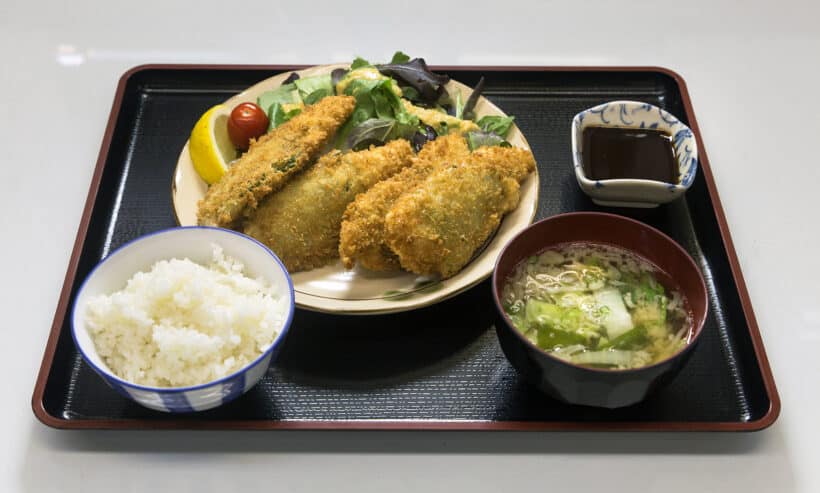
Flavor & Texture: A balanced harmony of umami-savory and earthy flavors that’s very comforting and soothing to drink. The longer your miso has been aged, the richer your miso soup will taste.
Cooking Time: You can make this delicious miso soup in 30 minutes.
Equipment: It’s best to use a fine-mesh strainer to blend the miso into the dashi stock.
Ease Level – Super Easy: You can make homemade miso soup from scratch with minimal preparation, few ingredients, basic cooking skills, and equipment. Yet it’s still tasty!
Serve: Miso soup is usually served in a small bowl to complement a Japanese meal.
Consuming Tip: Traditionally, you don’t consume miso soup with a spoon. Hold the bowl and bring it to your mouth to eat its contents with your chopsticks.
Miso Soup Ingredients
What is in Miso Soup?
Different regions, restaurants, and families have their own preferences & variations on how to make miso soup. Generally, you can make this basic homemade miso soup with 5 ingredients:
- Miso (red miso paste + white miso paste)
- Dashi stock (dried kombu, dried bonito flakes)
- Tofu
- Green onions
- Wakame seaweed (optional)
Additionally, you can add other ingredients such as Japanese radish, mushrooms, mussels, fish, shellfish, spinach, etc. to your miso soup.
*Note: We like to mix our own red miso and white miso for a more rich and complex miso soup. This also gives us more flexibility to adjust to our tastes. For convenience, some people like to use awasemiso (a mix of both white and red miso).
Red Miso Paste 赤味噌
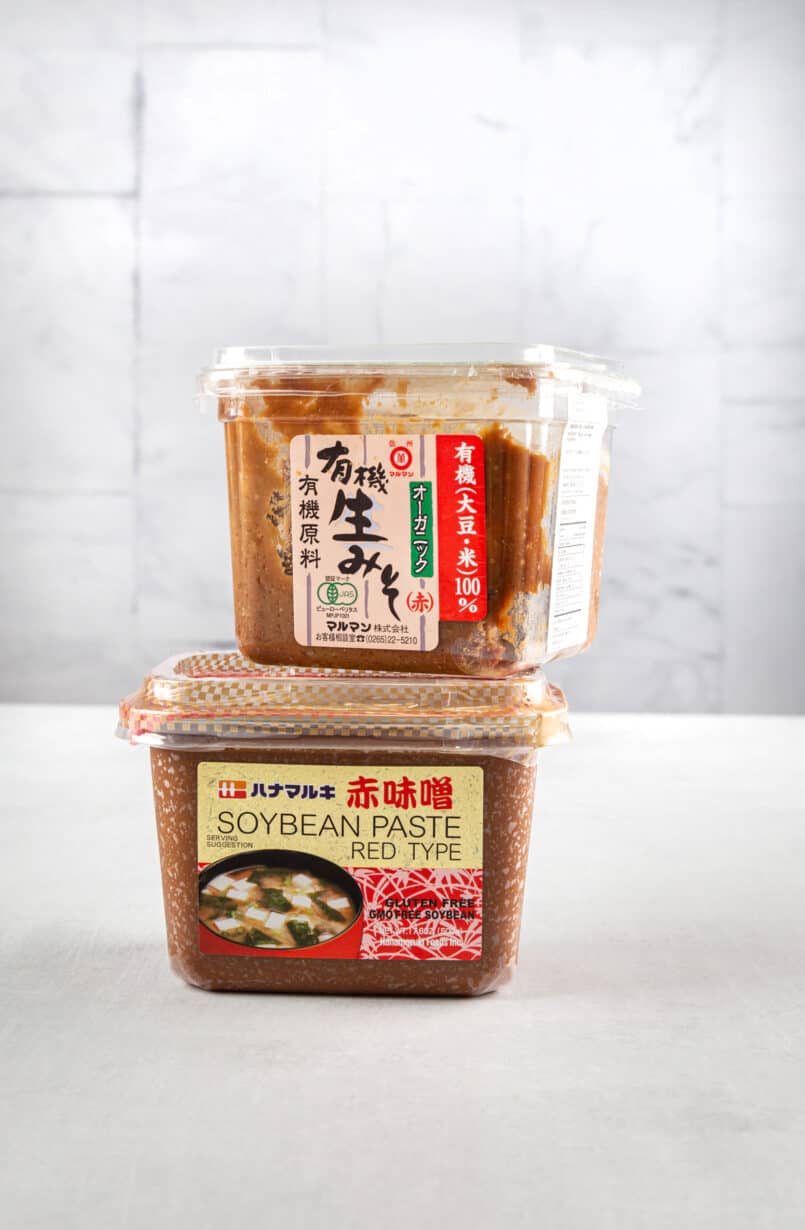
Red Miso Paste (Akamiso) is relatively darker in color. It can vary from light brown to dark brown. The longer the miso was fermented, the stronger, saltier, and more umami-savory it’ll taste. It tastes more intense and saltier than lighter, white miso paste.
White Miso Paste 白味噌
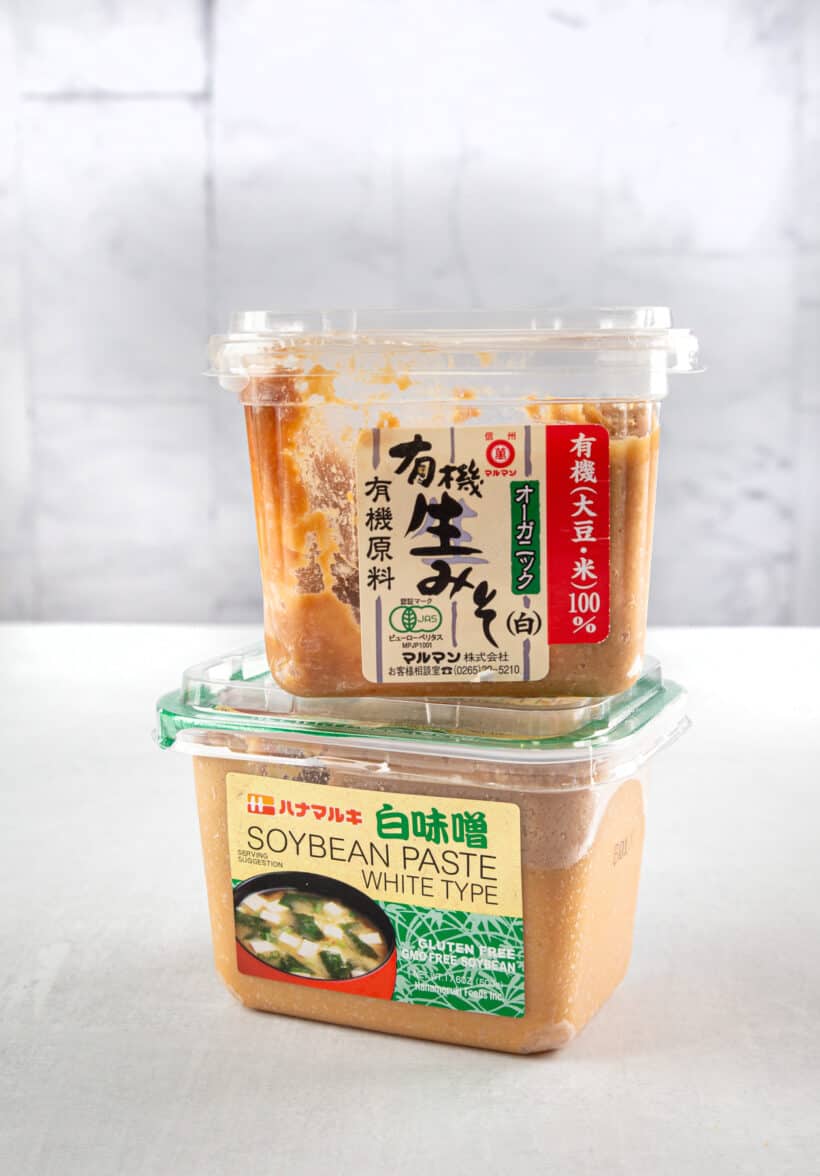
White Miso Paste (Shiromiso) is relatively lighter in color. It has a beige yellow color. Due to a shorter fermentation period, it tastes lighter and sweeter. It has a more delicate flavor and aroma compared to darker miso.
Dried Kombu 昆布
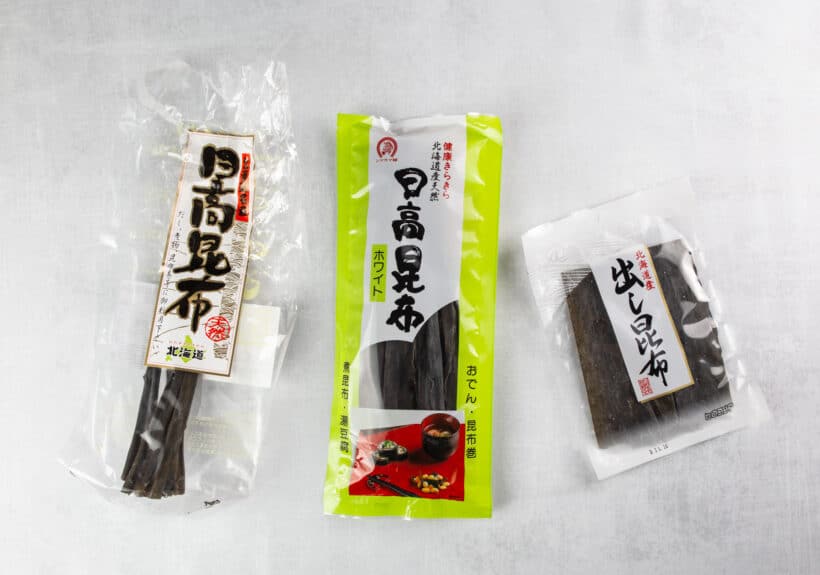
Kombu is dried kelp. There are 6 – 7 main species of kombu from Japan, mostly harvested in Hokkaido. Different species of Kombu can vary in sizes, shapes, colors, textures, and tastes.
For this Miso Soup Recipe, we used Hidaka-Kombu (Dried Kelp from Hidaka Hokkaido Japan) because it’s affordable and widely available in North America.
*Pro Tip: If you find some white chalky powdery substance on the kombu’s surface, do not dust or wash them off. They’re flavor-enhancing umami substances.
Dried Bonito Flakes 鰹節
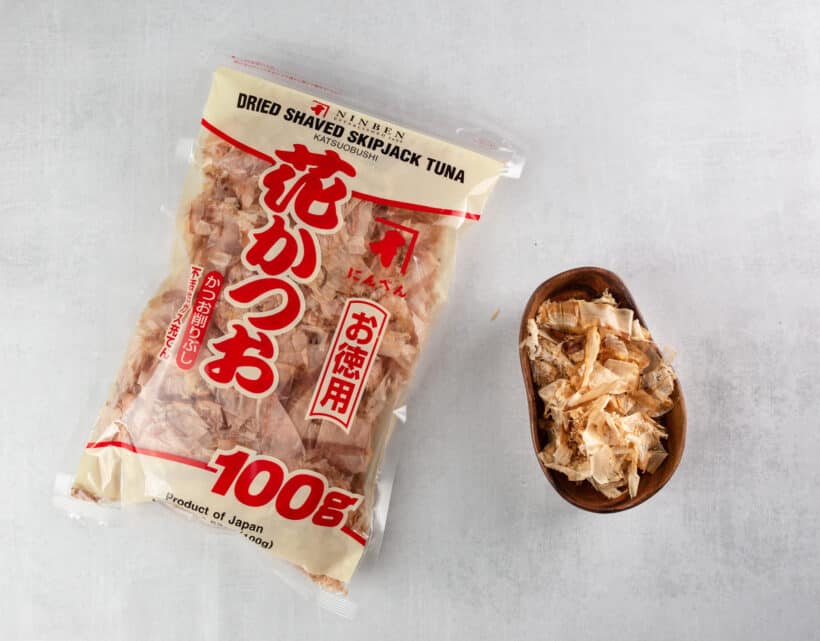
Katsuobushi (bonito flakes) is simmered, dried, smoked, and fermented skipjack tuna shavings. They’re smoky and pack with lots of umami (savory) flavors. They contain a high amount of protein, and rich in vitamins and minerals.
There are different types of Bonito Flakes. We used the Regular Hana Katsuo (花鰹 or 花かつお) to develop this miso soup recipe because it’s more widely available. They’re wider, thin, horizontal shavings. It’s good for making Japanese dashi stock, miso soup, topping for okonomiyaki, and takoyaki.
You can use Shaved Karebushi or Arakezuri if you can find them!
Wakame ワカメ
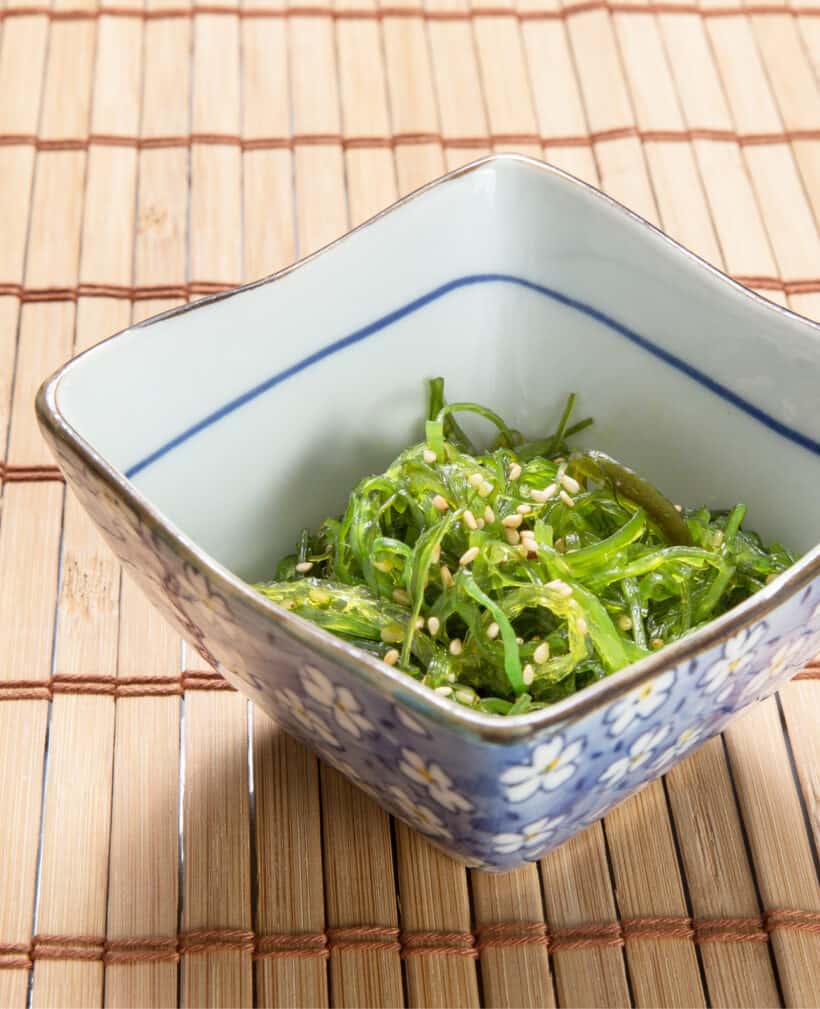
Wakame is a type of deep green edible seaweed that’s commonly used for soups, salads, or side dishes. It has a distinctive delicate, salty, umami, briny, subtly sweet flavor, and a silky, slippery texture when cooked.
Nowadays, you’ll probably find wakame packaged & sold as dried wakame strips.
*Pro Tip: Wakame is different from Nori or Kombu. Nori is the dried seaweed for making sushi rolls, and kombu is the dried kelp for making dashi.
Tofu
There are many varieties of tofu. The most common types you’ll find in the grocery store are silken tofu, regular firm tofu, extra firm tofu, dry tofu, fried tofu, deep-fried tofu puffs, and frozen tofu. I wished it’s easy to find stinky tofu! For making miso soup, you’ll need the regular firm pressed tofu.
Is Miso Soup Vegan?
Since our dashi stock is made with dried bonito flakes (skipjack tuna shavings), this Miso Soup is not vegan. However, you can adjust it to fit the vegan diet by substituting the dashi stock with kombu dashi or shiitake mushroom kombu stock.
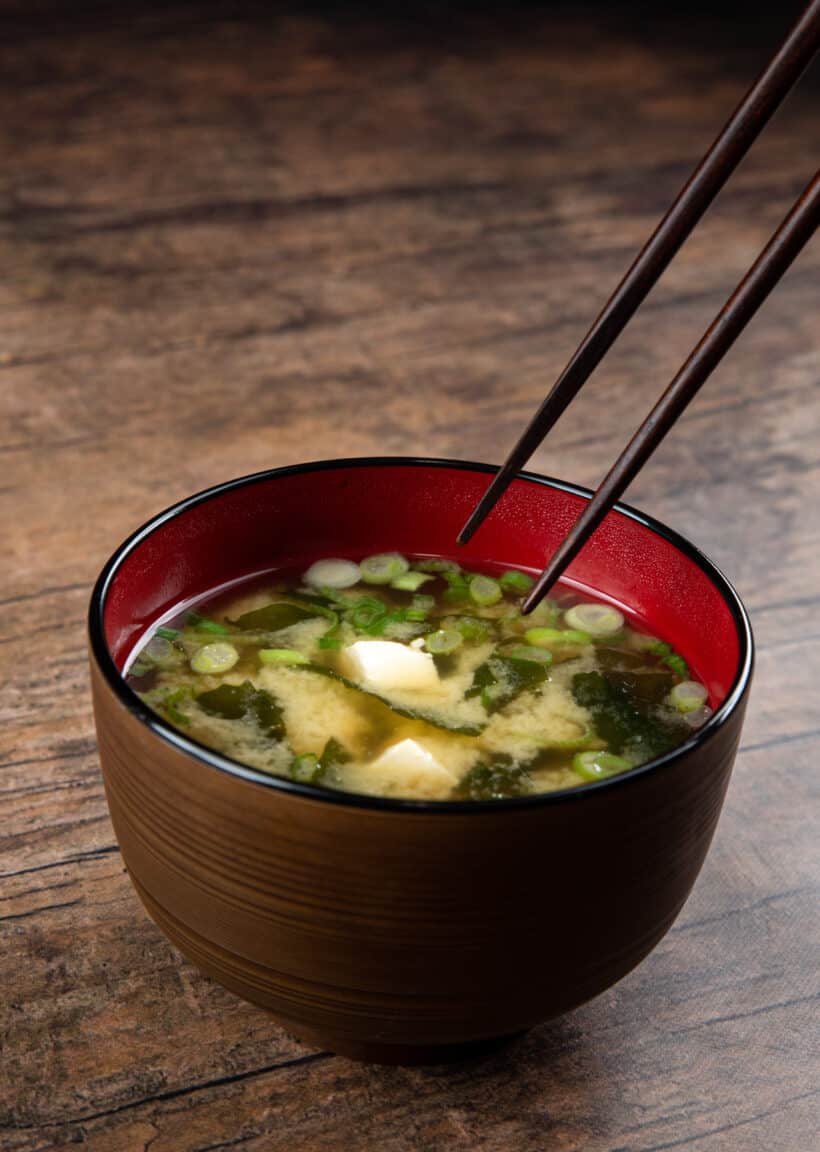
Tools for Making Japanese Miso Soup
Step-by-Step Guide: How to Make Miso Soup
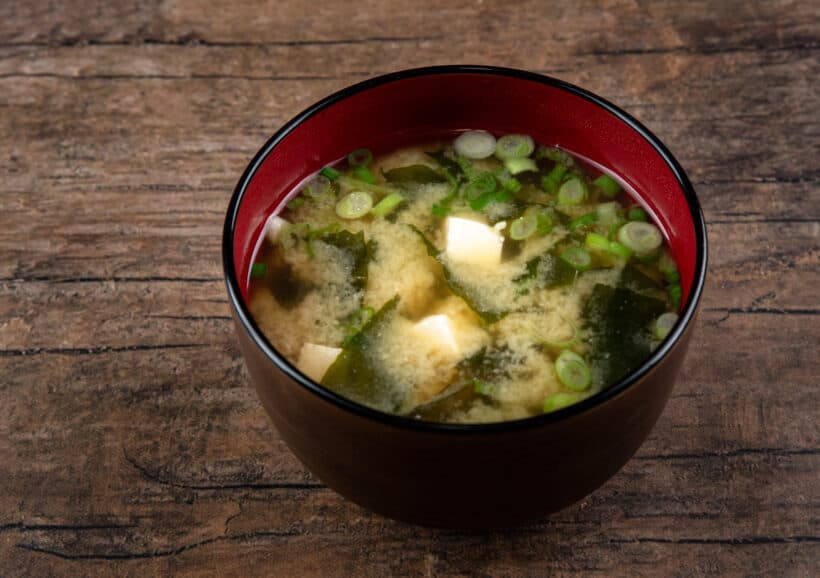
3 Steps to Make Easy Miso Soup:
- Make Dashi Stock
- Add Tofu and Wakame
- Mix Miso Paste into Dashi
How to Scale this Homemade Miso Soup Recipe?
You can easily scale this miso soup recipe to make more servings.
- For 2 servings: use 6g dried kombu, 2 cups (500ml) cold water, and 7.5g bonito flakes.
- For 4 servings: multiply all the ingredients by 2 while using the same cooking time.
Prepare Ingredients
Wakame (optional): If you’re using dried wakame, rehydrate dried wakame (4g for 2 servings) with 1 cup of warm water for 10 minutes. Then, discard the soaking water and drain well.
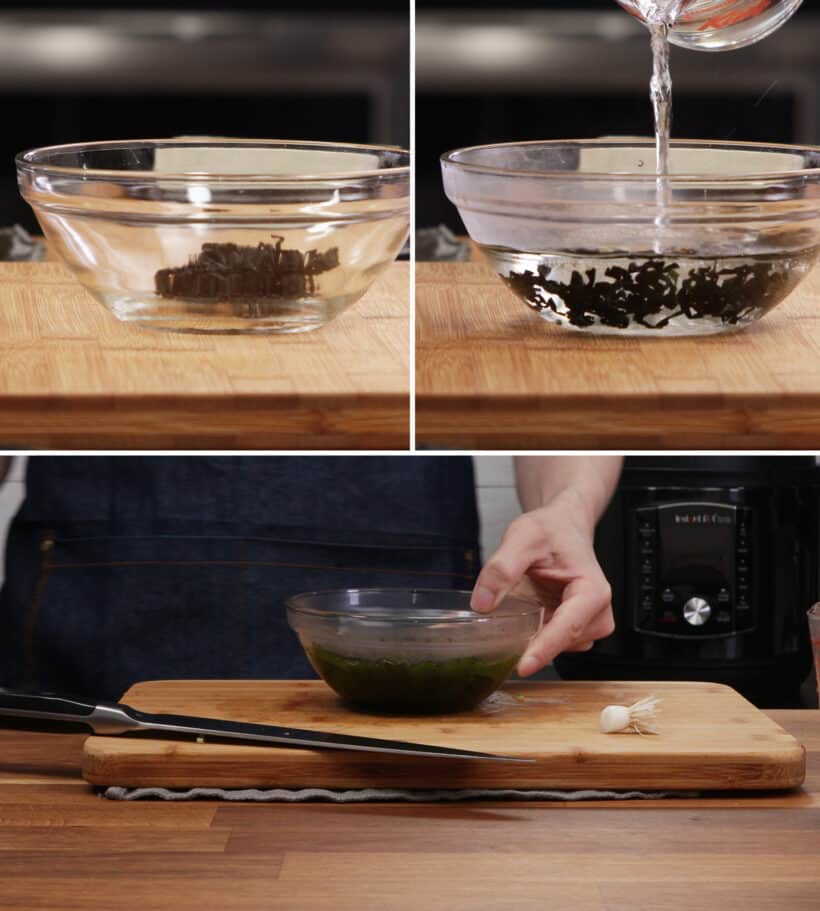
Green Onions: Finely slice the green onions the best you can. For reference, use half a stalk of green onions per 2 servings.

Tofu: Cut tofu into your preferred cube size. For reference, use about 60g – 70g per 2 servings.
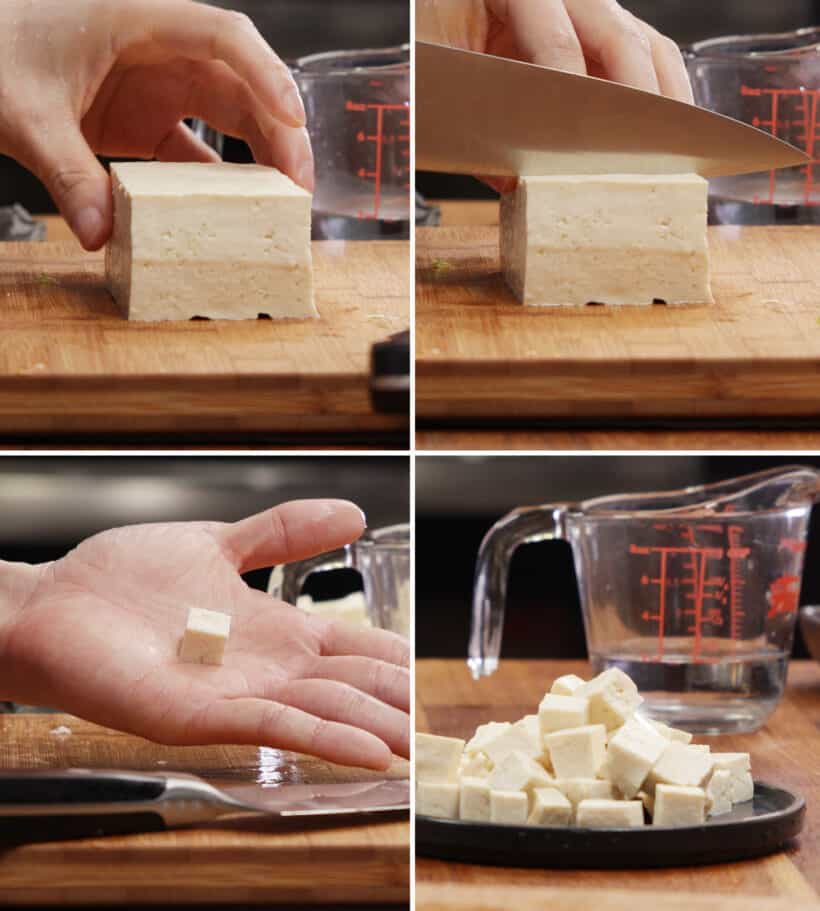
Add Kombu and Water in Pot
First, add 6g dried kombu and 2 cups (500ml) cold water in your Instant Pot or saucepan.
*Note: If you see some white powdery substance on your kombu, do not wash or dust off the flavor-enhancing compounds.
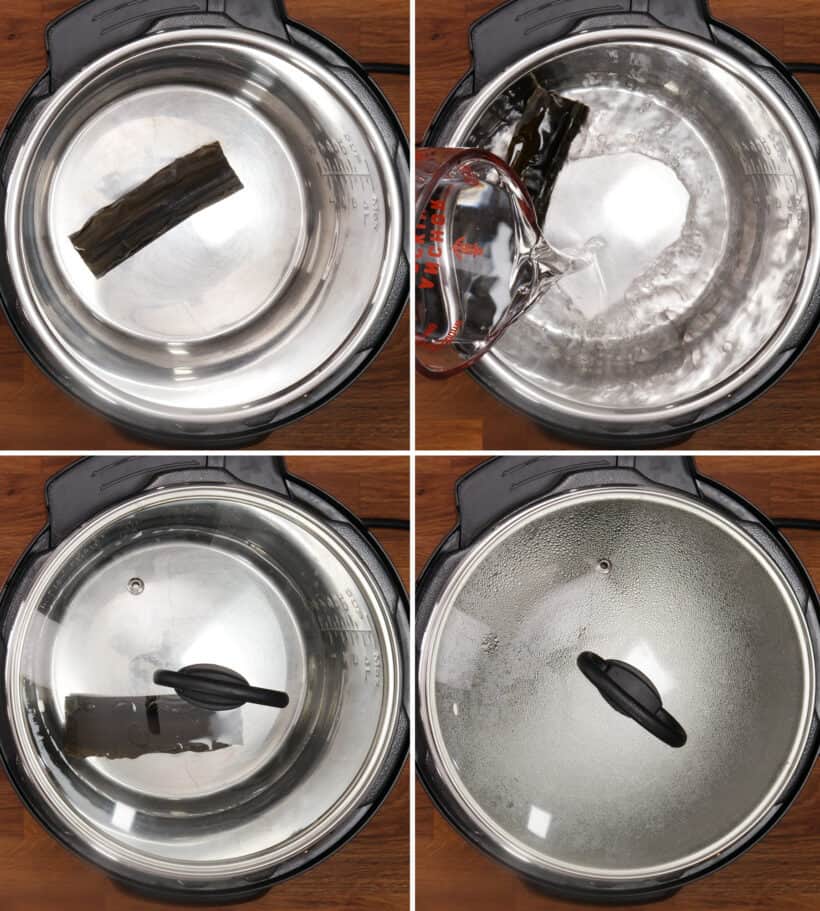
Instant Pot: use the “Saute Normal” function. If your Instant Pot doesn’t have “Saute normal”, you can use “Saute Low” function instead. Cover the pot with a glass lid.
Saucepan: turn heat to medium-low.
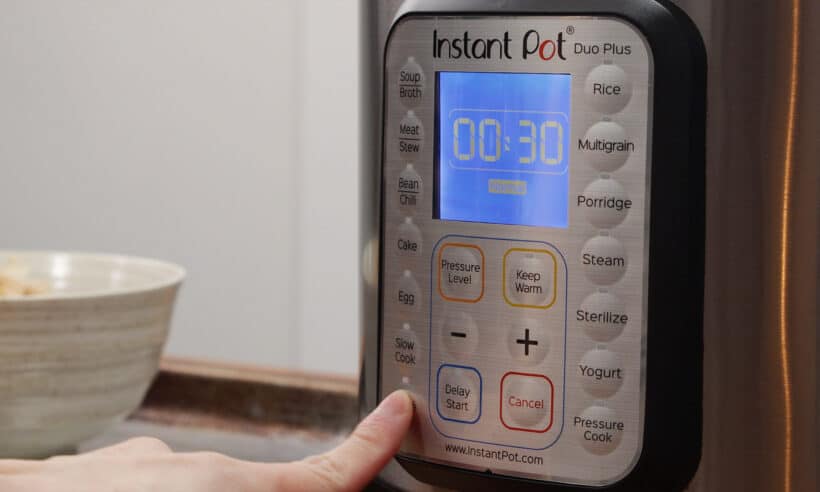
When the liquid is barely simmering, immediately turn off the heat.
*Note: It should take roughly 6 to 12 minutes for the liquid to begin simmering. The more servings you make, the longer it’ll take for the water to start simmering.
Add Bonito Flakes in Dashi
Now, submerge 7.5g dried bonito flakes in the kombu stock mixture.
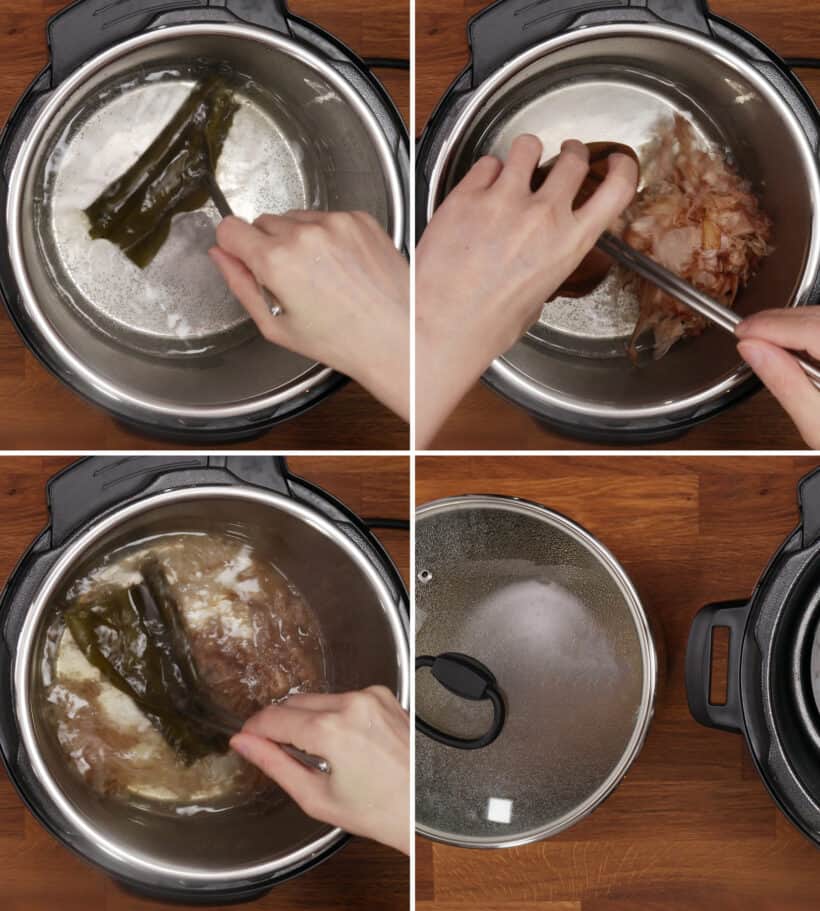
If you’re using the Instant Pot or an electric stove, move the pot to the countertop.
Close the lid, then allow the bonito flakes to steep for 7 – 10 minutes.
*Pro Tip: For 1 to 2 miso soup serving sizes, we recommend steeping for the full 10 minutes.
Strain Kombu and Bonito Flakes
Open the lid, then remove the kombu and bonito flakes with a fine-mesh strainer.
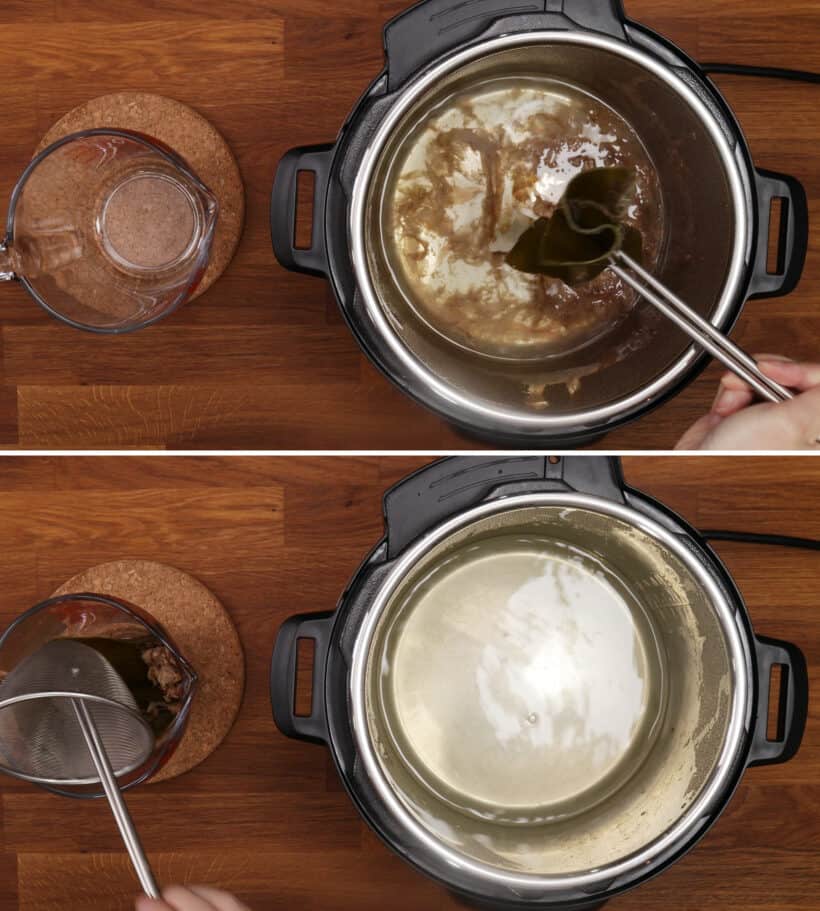
Now, make sure to squeeze all the absorbed umami dashi stock out of the bonito flakes.
*Pro Tip: Don’t throw away the kombu and dried bonito flakes because they’re completely edible. Also, you can use them one more time to make milder dashi, aka Niban Dashi (Japanese: 二番だし), or in a side dish.
Add Tofu and Wakame
Now, add 120g – 160g tofu cubes to the pot.
Bring the dashi stock back to a simmer over medium heat. (Instant Pot: use “Saute More” function).
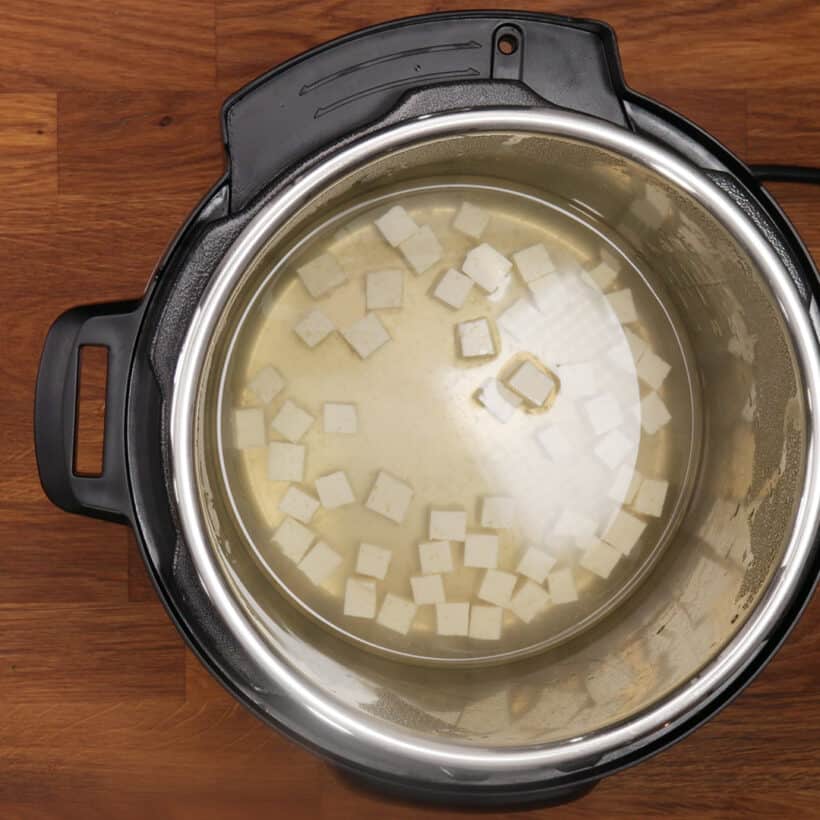
Once the stock starts to simmer, turn off the heat and switch to “Keep Warm”.
Finally, add the rehydrated wakame to the dashi tofu stock.
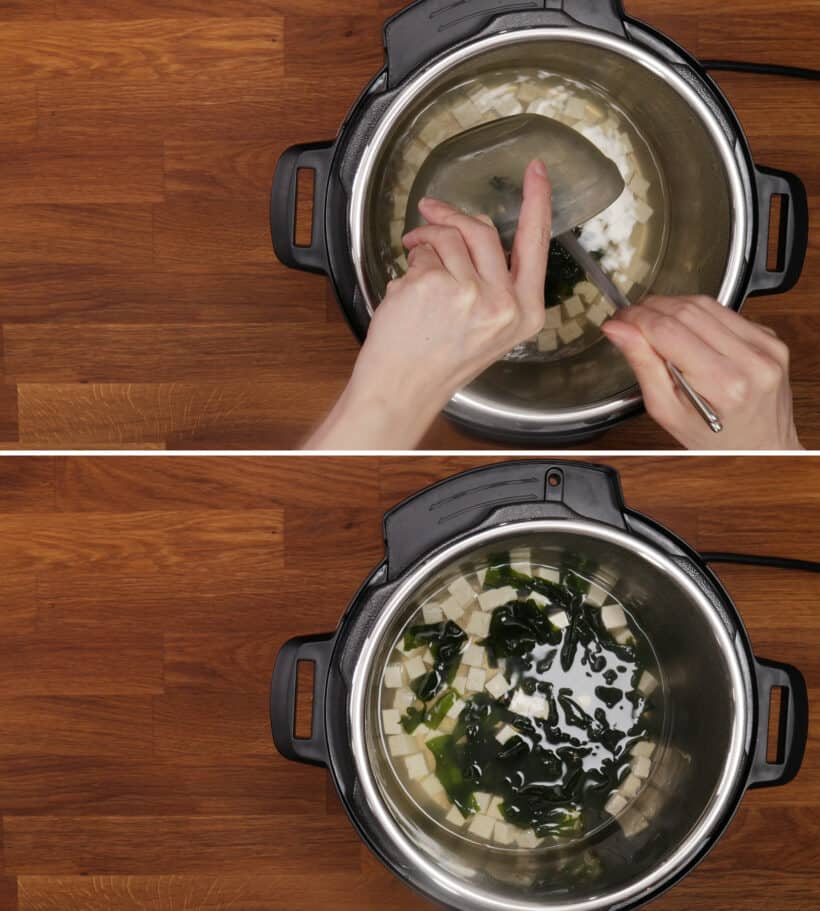
Mix in Miso Paste and Serve
*Miso Tip: Different brands and batches of miso will vary in taste, flavor intensity, aroma, and texture. Make sure you taste & adjust accordingly!
First, we’ll add the red miso paste to the dashi stock. Mix 1 tbsp (22g) red miso into the dashi stock.
*Pro Tip: The best way to thoroughly dissolve and blend the miso into the stock is to use a fine-mesh strainer. First, place the red miso paste in the fine mesh strainer. Then, lower the strainer into the dashi stock. Finally, use a pair of chopsticks or spoon to stir and dissolve the miso paste into the stock.
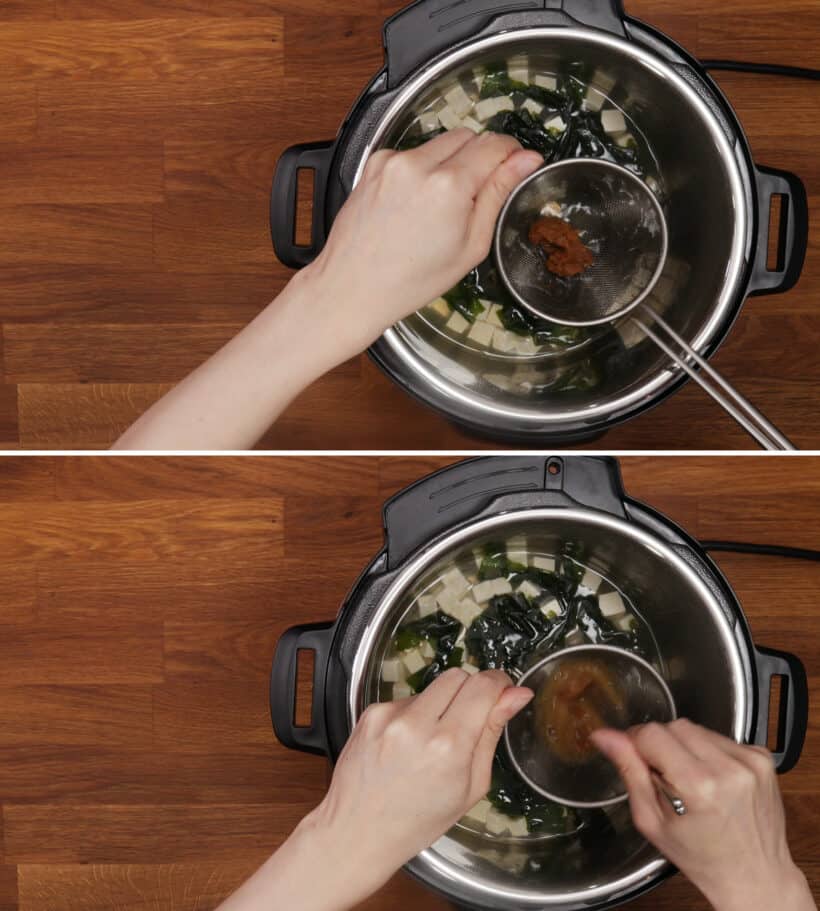
*Note: Be gentle and don’t break the tofu cubes!
Now, taste the miso soup and determine how much white miso paste you’ll need to add for more balanced flavors. For reference, you’ll need roughly 2 tsp (14.5g) – 1 tbsp (22g) white miso paste.
Mix roughly 2 tsp (14.5g) – 1 tbsp (22g) white miso paste into the miso soup with a fine-mesh strainer.
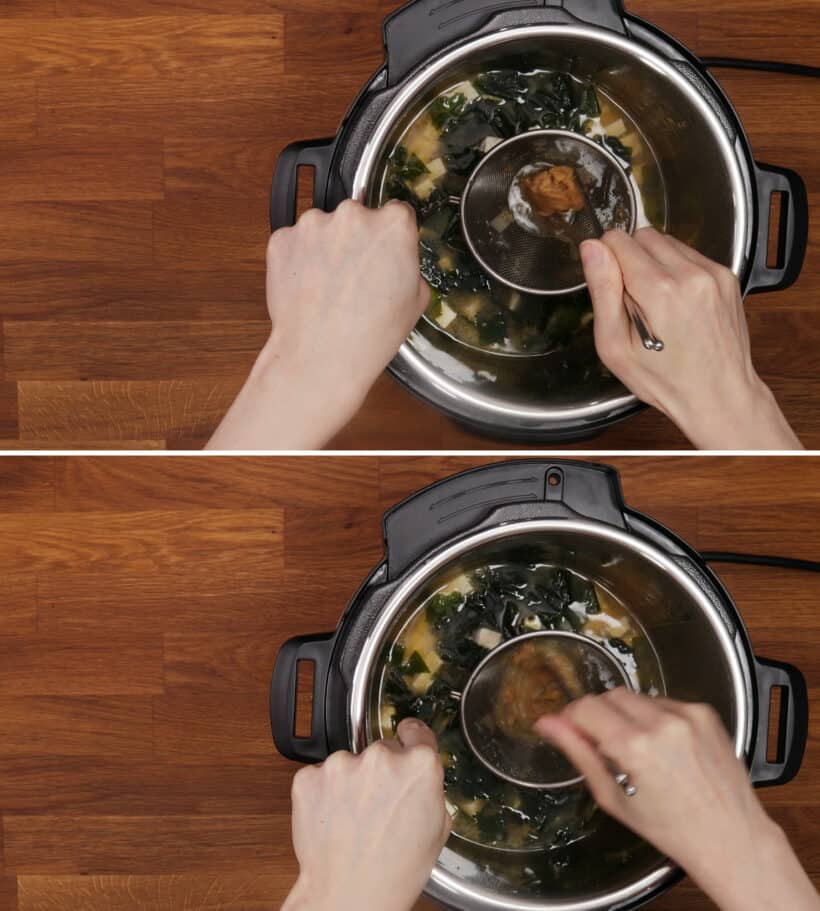
Once everything is properly seasoned, garnish with finely sliced green onions.
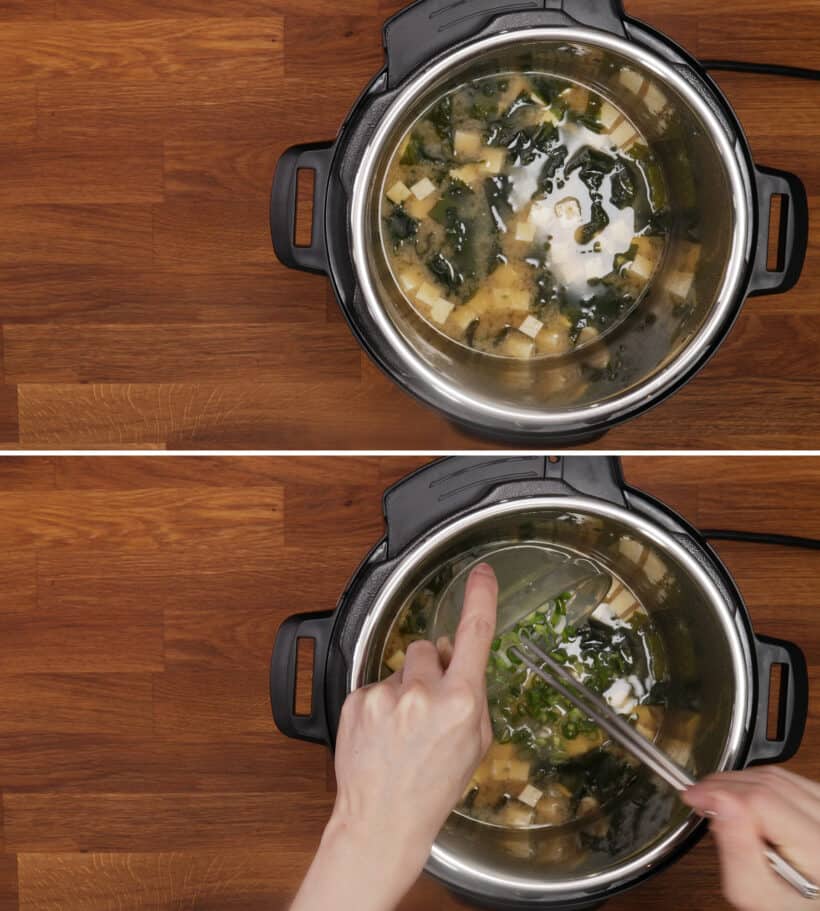
Finally, serve your tasty & comforting homemade miso soup.
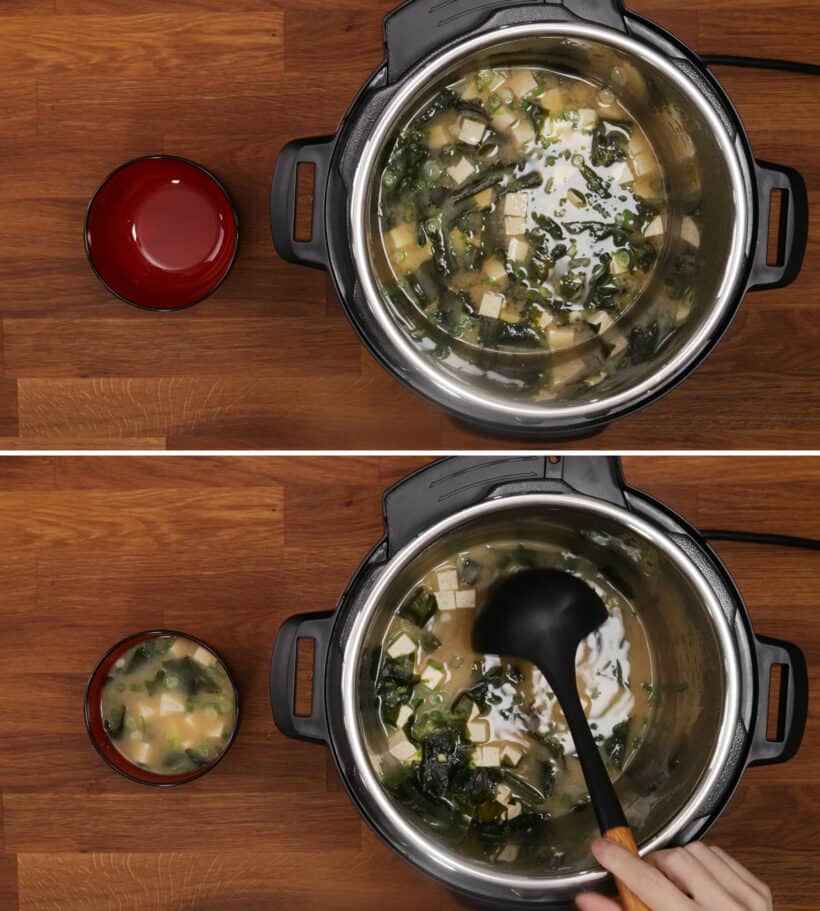
What to Serve with Homemade Miso Soup
Miso Soup is the staple soup that complements many Japanese meals from everyday meals to fancy sushi meals. Here are some delicious meals you can serve with miso soup:
- Make your own Sushi Rice and California Roll
- Instant Pot Teriyaki Chicken
- Instant Pot Japanese Curry
- Japanese-Italian Shrimp Risotto (also uses miso)
- Ginger Pork Shogayaki (also uses miso)
- Japanese Curry with Tonkatsu
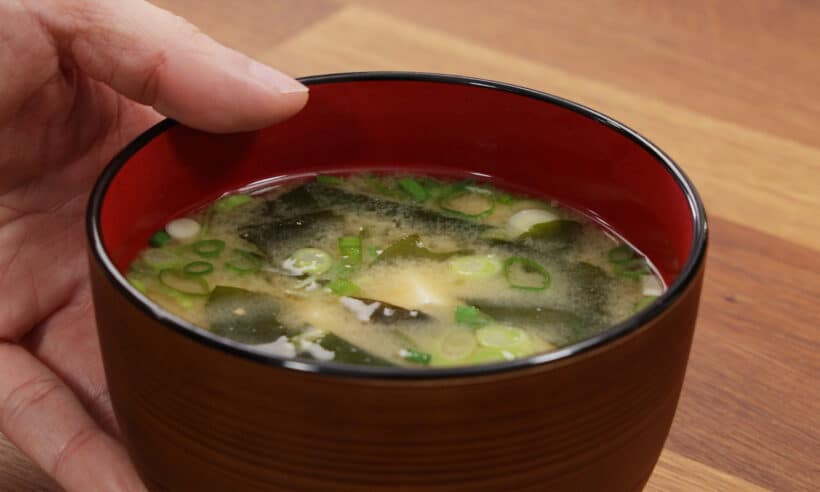
Enjoy your Japanese Homemade Miso Soup!
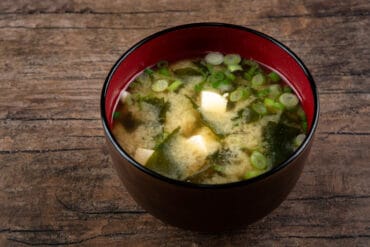
Miso Soup 味噌汁
Ingredients
- 500 ml (2cups) cold water
- 1 piece (6g) dried kombu
- 7.5 grams dried bonito flakes
- 120 grams - 160 grams tofu (60g-70g per 2 servings)
- 4 grams wakame , rehydrated (optional)
- 1 tablespoon (22g) red miso
- 2 teaspoons (14.5g) - 1 tablespoon (22g) white miso
- ½ - 1 stalk green onion , finely sliced (half a stalk per 2 servings)
♥ Share this Recipe so We can create more yummy recipes for you. Thank you 🙂
Instructions
- Prepare Ingredients: Dried Wakame: rehydrate 4g dried wakame with 1 cup warm water for 10 minutes. Discard the soaking water and drain well. Green Onions: Finely slice the green onions as best as you can. Tofu: Cut tofu into your preferred size cubes.
- Add Kombu and Water in Pot: Add 6g dried kombu and 2 cups (500ml) cold water in your Instant Pot or saucepan. Instant Pot: use "Saute Normal" function. Alternatively, use "Saute Low" function. Saucepan: turn heat to medium-low. Cover the pot with a glass lid. When the liquid is barely simmering, immediately turn off the heat. *Note: It should take roughly 6 to 12 minutes for the liquid to begin simmering. The more servings you make, the longer it'll take to start simmering.
- Add Bonito Flakes in Dashi: Submerge 7.5g dried bonito flakes in the kombu stock. If you're using the Instant Pot or an electric stove, move the pot to the countertop. Close the lid, then allow it to steep for 7 - 10 minutes. *Pro Tip: For 1 to 2 serving sizes, we recommend steeping for the full 10 minutes.
- Strain Kombu and Bonito Flakes: Open the lid, then remove the kombu and bonito flakes with a fine-meshed strainer. Squeeze all the absorbed dashi stock out of the bonito flakes.
- Add Tofu and Wakame: Add 120g - 160g cubed tofu to the pot. Bring the dashi stock back to a simmer over medium heat. (Instant Pot: use "Saute More" function). Once the stock starts to simmer, turn off the heat and switch to "Keep Warm". Add the rehydrated wakame to the dashi tofu stock.
- Mix in Miso Paste and Serve: Mix 1 tbsp (22g) red miso into the dashi stock. *Pro Tip: The best way to thoroughly blend the miso into the stock is to use a fine-mesh strainer. First place the miso paste in the strainer, lower the strainer into the stock, then use a spoon to stir the miso paste into the stock. *Note: Be gentle and don't break the tofu! Taste the miso soup and see how much white miso paste you’ll need to add. For reference, mix roughly 2 tsp (14.5g) - 1 tbsp (22g) white miso paste into the miso soup. When miso soup is properly seasoned, garnish with finely sliced green onions. Serve & enjoy your tasty miso soup.
Notes
- For 2 servings: use 6g dried kombu, 2 cups (500ml) cold water, and 7.5g bonito flakes.
- For 4 servings: multiply all the ingredients by 2 while using the same cooking time.
Nutrition
All Our Pressure Cooker Recipes
*Disclosure: We are an Amazon Influencer/Amazon Associate. This means that if you decide to purchase items or services on Amazon through our links on Pressure Cook Recipes to Amazon, Amazon will send a small commission to us at no additional costs to you. Thank you!
